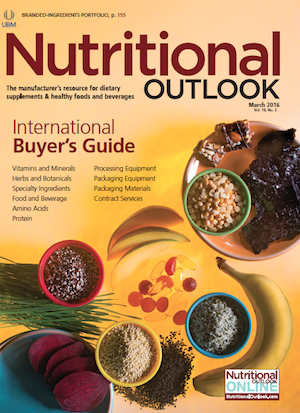Pet Nutrition and Food: Market Sales and Opportunities
Pet parents shop for pet food with many of the same nutrition goals they hold for themselves.
Photo © iStockphoto.com/travellinglight

With annual U.S. pet-food sales now worth well over U.S. $21 billion, and more than half of U.S. households including at least one cat or dog, according to the Pet Food Institute, the pet-nutrition market presents ever-growing opportunities. Humanization remains the market buzzword, referring to the increased tendency of pet owners today to treat pets like family members, providing only the very best in terms of care. As a result, it is not surprising that consumer concerns evident in the human-food and -drinks market as a whole are increasingly replicated in the pet-foods sector. Today’s drivers in pet nutrition are led by an ongoing focus on health, as well as demands for more human-grade products. There is also growing interest in ingredient transparency, clearer labelling, and more efficient, sustainable production processes.
Preventative healthcare is an increasingly important issue. Nearly 75% of global pet-food launches recorded by Innova Market Insights in the 12 months ending October 2015 were marketed on a health platform of some kind, rising to over 80% in the United States. Dog foods saw a greater use of health claims, featured on 80% of global introductions and on 86% of U.S. launches. Health-claims usage is also high in the cat-food space, however, with 68% of global cat-food launches and up to 72% of U.S. launches touting health claims.
Just as in many human-food and -drinks categories, clean-label claims lead the pack. Thirty-five percent of global launches used either “natural,” “no additives/preservatives,” and/or “organic” claims, rising to 50% of launches in the United States.
In terms of “active” health claims, digestive/gut health is the most popular active health claim used in pet-food launches, featured on over 20% of U.S. introductions-ahead of the use of vitamin and mineral claims (15%) and omega-3 fatty acids/DHA claims (nearly 11%). Many products do not attribute specific benefits to omega-3 fatty acids, but consumers already inherently link these nutrients with a number of benefits, including joint health and the maintenance of skin health and a shiny coat.
Just as interest is rising in high-protein human foods, interest is also high in pet foods, where “high in” and “source of” protein claims featured on nearly one-fifth of launches. There is also ongoing interest in protein alternatives and more exotic protein sources, such as game meats and seafood, non-GMO options, grain-free formulations, and now a move back to basics with wilderness and raw options (although some of these still remain largely confined to the speciality pet-food sector).
The availability and sales of raw-infused mixers and kibble products continued to rise in the United States in 2015, giving owners a more economical and convenient way of trying their pets on this style of diet. Launches included TruDog Feed Me Crunchy Munchy Beef Bonanza Freeze-Dried Raw Superfood, Castor & Pollux Organic Grain Free Free-Range Recipe with Raw Bites, and Nature’s Variety Instinct Raw Boost Mixers.
For the dogs: Loving Pets’ Puffsters all-natural, low-fat, air-puffed chips, launched in Q4 2015, mirrors the trend of air-puffed snacks for humans.
Special Needs
Formulations addressing the nutritional requirements of a particular age of pet or pet condition are long established, whether for puppies and kittens, senior dogs and cats, obese dogs, indoor cats, neutered cats, etc. There is also ongoing interest in more specific products targeting conditions associated with aging in order to extend a pet’s active life-interest not only in foods, but also in the increasingly large and diverse market for pet treats and snacks. Oral-health options also continue to be popular, featured in nearly 10% of U.S. launches, with particular activity in dog snacks and treats. Joint-health claims were used on 7% of introductions, again particularly for dogs and older pets.
Pet Snacks
Snacks continue to be one of the fastest-growing areas of the pet-foods market as consumers look to treat their pets, increasingly offering them products mirroring human-snack formats. In 2015, for example, the trend of air-puffed and popped snacks crossed over to the pet-foods sector, with launches such as Loving Pets’ Puffsters, described as “all-natural air-puffed snacks”-similar to human-snack chips in shape and size and featuring chicken with added fruits and vegetables. Snack bars for dogs are also increasingly popular, often featuring healthy and/or indulgent ingredients.
Pet Opportunities
Buoyant sales in the pet-foods market show no signs of slowing, not only in emerging markets such as China and Brazil, but also in the large, relatively mature and highly competitive U.S. market, where there are ongoing opportunities to add value by targeting ever more specific segments of the market in terms of age, breed/type, and/or need state. Offering nutritious, convenient meals, snacks, and treats is a key way to reach health-seeking pet parents.

.png&w=3840&q=75)

.png&w=3840&q=75)



.png&w=3840&q=75)



.png&w=3840&q=75)













